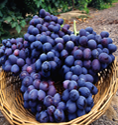Other cardioprotective properties of garlic
Animal study
Garlic has a significant antiarrhythmic effect in both ventricular and supraventricular arrhythmias. Garlic powder (1% added to a standard chow for an 8 week period) significantly reduced ischemia reperfusion-induced ventricular fibrillation (VF) in isolated perfused rat heart [138]. Garlic dialysate suppressed premature ventricular contractions and ventricular tachycardia in ouabain-intoxicated dogs as well as ectopic rhythms induced by isoprenaline and aconitine on electrically driven left rat atria [139]. Garlic dialysate decreased the positive inotropic and chronotropic effects of isoproterenol in a concentration dependent manner. β-receptor blocking action of garlic was also suggested by Martin et al [140]. The positive inotropism and chronotorpism induced by isoproterenol were partially antagonized by preincubation of the rat atria with the garlic dialysate. The ECG showed a regular sinus bradycardic rhythm in garlic dialysate fed anaesthetized rat [140]. Direct relaxant effect of cardiac muscles was reported by Aqel et al [141]. Garlic juice inhibited norepinephrine-induced contractions of rabbit and guinea pig aortic rings. It also inhibited the force of contraction of isolated rabbit heart in a concentration-dependent manner [141]. Only one study showed that aqueous garlic extract increased the amplitudes of atrial complex 'p' wave and the ventricular complex 'QRS' of the rat ECG. This is suggestive of increase in voltage output of the atria and ventricles probably in accordance with positive inotropism [142].
Raw garlic homogenate augmented endogenous antioxidants along with reduction of basal lipid peroxidation in rat heart, liver and kidney in a dose dependent manner [143,144]. Aged garlic extract (AGE) also exerted its antioxidant action by scavenging reactive oxygen species [145] and enhancing the cellular antioxidants, like reduced glutathione superoxide dismutase, catalase and glutathione peroxidase of vascular endothelial cells [146,147]. Augmented endogenous antioxidants on heart and endothelial cells have important direct cytoprotective effects, especially in the event of oxidant stress induced injury. Recently, in our laboratory, we found that chronic oral administration of garlic homogenate protected the rat heart from in vitro ischemic reperfusion injury [148] and oxidative stress induced by single dose of adriamycin [149]. AGE has been shown to offer protection against the cardiotoxic effects of doxorubicin, an antineoplastic agent used in cancer therapy [150]. Feeding of garlic powder in rats for 11 days had a protective effect on isoproterenol-induced myocardial damage [151]. In another study, the size of the ischemic zone was significantly reduced and the onset of arrhythmia after occlusion of the descending branch of the left coronary artery was significantly prolonged in rats fed with a standard chow enriched with 1% garlic powder for 10 weeks [152]. Aqueous garlic extract was also found to be effective in reducing Cu (+)-initiated oxidation of low density lipoprotein (LDL) as measured by photochemiluminescence method [42]. AGE also protected vascular endothelial cells from H2O2-induced oxidant injury [153].
Human Study
Aortic stiffening is as much an important risk factor in cardiovascular morbidity and mortality, as it serves as reliable surrogate marker for clinical endpoints like myocardial and cerebrovascular incidents. Elevated aortic stiffness induces high systolic blood pressure, augmented pulse pressure with increased ventricular afterload, reduced subendocardial blood flow and augmented pulsatile stress in the peripheral arteries [154]. In population, consuming garlic for long period, attenuation of age-related increase in aortic stiffness has been observed. This suggests a protective effect on the elastic properties of the aorta related to aging in human [155]. This study also showed that regular long term garlic powder intake protected endothelial cell from oxidative injury [155]. Twelve week therapy with garlic powder (800 mg/day) was effective in patients with peripheral arterial occlusive disease Stage II. There was a significant decrease of plasma viscosity. It is also quite interesting that the garlic-specific increase in walking distance did not appear to occur until the 5th week of treatment [87]. Microcirculation of skin increased by 48% after administration of 800 mg/day garlic powder over a period of four weeks. Plasma viscosity was decreased by 3.2% [78]. Kiesewetter also reported that garlic improved blood fluidity and increased capillary perfusion [156]. Decreased plasma viscosity and increased (55%) capillary skin perfusion were observed even after 5 hours of garlic powder administration [157]. All these studies are summarised in Table- 6.



